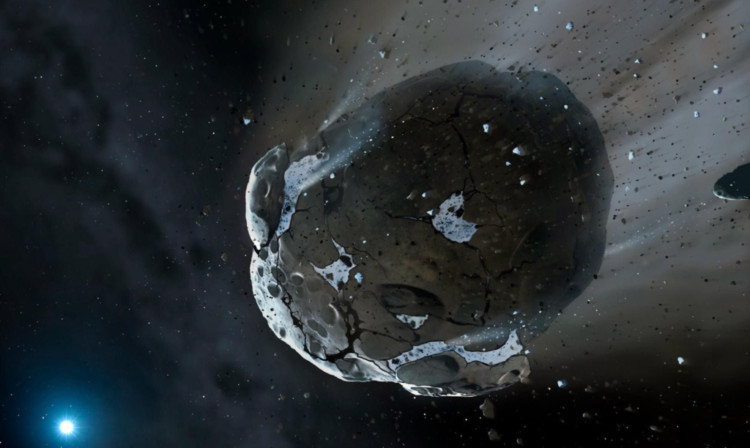Evidence of an apocalypse in a planetary system similar to our own has been uncovered by astronomers studying a dying star.
The shredded remains of a watery asteroid suggest that hundreds of millions of years ago the system may have harboured Earth-like habitable planets.
But any intelligent beings living there must have departed assuming they had mastered space travel or been extinguished as their sun blew up and then collapsed into a ‘white dwarf’.
Scientists believe six billion years from now alien astronomers studying the burned out remains of our sun may come to the same conclusion.
Like the white dwarf GD 61, the sun is destined to end its life by first expanding into a red giant then shedding its outer layers and contracting into a super-dense glowing ember just a few thousand miles in diameter.
The dying sun will radiate what is left of its heat over billions of years before finishing its life as a dead, cold, ‘black dwarf’.
Astronomers studying the light emitted by GD 61, located 150 light years away from the Earth, detected an abundance of “rocky” elements such as magnesium, silicon and iron.
They also found oxygen in quantities that indicated a very large amount of water. Only a water-rich massive asteroid, or minor planet, can explain the observations, say the scientists.
The giant rock, at least 90 kilometres in diameter, would have been drawn in by the white dwarf’s powerful gravity and ripped apart.
If such an asteroid existed in the system, it is highly likely that rocky, water-covered, Earth-like planets did too. Since only 0.02% of the Earth’s mass consists of water, the oceans that cover its surface were probably delivered by impacts from watery asteroids and comets.
